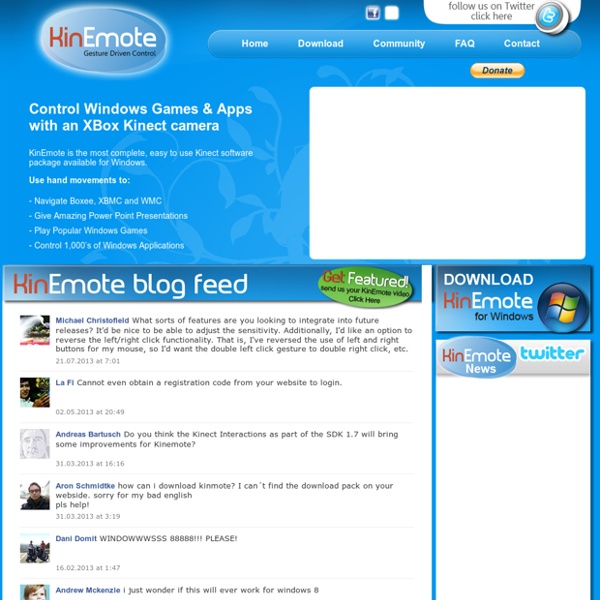



Rochester Institute of Technology Site-wide links Menu Mobile App Search Rochester Institute of Technology Give to RIT More Stories » Welcome Quick Links Select a destination Quick Links myRIT LOGIN myRIT Login Video Spotlight Robotic Chimes made by Engineering Students Watch the video News Book addresses economic impact of invasive species » Student identifies optical lithography solutions » Bevier Gallery displays young students’ best art » Visit University News for more news coverage. Connect with RIT 41,276 likes 9,099 followers 1,122 subscribers 83,729 followers Mobile at RIT View More » Events January 24Intersession/Spring Semester Break January 24 - 25Women's hockey vs. January 27Spring Semester day, evening, and online classes begin January 30Expressions of King's Legacy Celebration » January 31Gospel Fest » February 8Men's hockey vs. February 14Transfer Student Open House » See alsoevents calendar »academic calendar »multicultural calendar » Copyright © Rochester Institute of Technology.
OpenNI - OpenNI > Home Kinect PowerPoint Control Kinect for Windows Software and Multitouch Monitors Why Do We Need Limits and Infinitesimals? So many math courses jump into limits, infinitesimals and Very Small Numbers (TM) without any context. But why do we care? Math helps us model the world. But, we want an accurate model. The tricky part is making a decent model. The Paradox of Zero Breaking a curve into rectangles has a problem: How do we get slices so thin we don’t notice them, but large enough to “exist”? If the slices are too small to notice (zero width), then the model appears identical to the original shape (we don’t see any rectangles!). If the slices are tiny but measurable, the illusion vanishes. We want the best of both: slices so thin we can’t see them (for an accurate model) and slices thick enough to create a simpler, easier-to-analyze model. The Solution: Zero is Relative The notion of zero is biased by our expectations. Well, “i” sure looks like zero when we’re on the real number line: the “real part” of i, Re(i), is indeed 0. You see, there are two answers (so far!) Overview of Limits & Infinitesimals Summary
Trackmate 1. Print Tags Trackmate uses a small, specially designed circular barcode that stores information which can be easily decoded by the Trackmate Tracker. 2. There are a lot of different ways that you can build a Trackmate system. 3. The Trackmate Tracker reads Trackmate tags (by processing images from a webcam) and then sends the corresponding data to any spatial application via LusidOSC. 4. Trackmate sends object data via LusidOSC (a protocol layer for unique spatial input devices), allowing any LusidOSC-based application to work with the system.
Why Some People See Sound | Flash Illusions Some people may actually see sounds, say researchers who found this odd ability is possible when the parts of the brain devoted to vision are small. These findings points to a clever strategy the brain might use when vision is unreliable, investigators added. Scientists took a closer look at the sound-induced flash illusion. When a single flash is followed by two bleeps, people sometimes also see two illusory consecutive flashes. Past experiments revealed there are strong differences between individuals when it comes to how prone they are to this illusion. These differences suggested to de Haas and his colleagues that maybe variations in brain anatomy were behind who saw the illusion and who did not. On average, the volunteers saw the illusion 62 percent of the time, although some saw it only 2 percent of the time while others saw it 100 percent of the time. "If we both look at the same thing, we would expect our perception to be identical," de Haas told LiveScience.
Revs Program at Stanford | Connecting the past, present and future of the automobile What are “Mental Models”? | Making Connections Editor’s note: This is part one of a two part series on Systems Thinking and mental models In writing and teaching people about Systems Thinking, we often refer to “mental models”. For some people, this comes as a bit of a surprise, because the context usually involves building models with the iThink or STELLA software. They don’t expect us to start talking metaphysically about thinking. “Is this about philosophy or modeling software?” Let’s define the term model: A model is an abstraction or simplification of a system. So, what is a “mental model”? Imagine that you are standing outside, looking at a tree. So at this point, we’ve only addressed the mechanisms by which you perceive the tree. What makes the image of a tree in your minds click as an actual tree that exists right there in front of you? A tree is a plant. Take a look at these images for a few moments and then think about what is happening inside your mind as you look at them. Thinking About Systems
Life Science Materials from B-Bridge